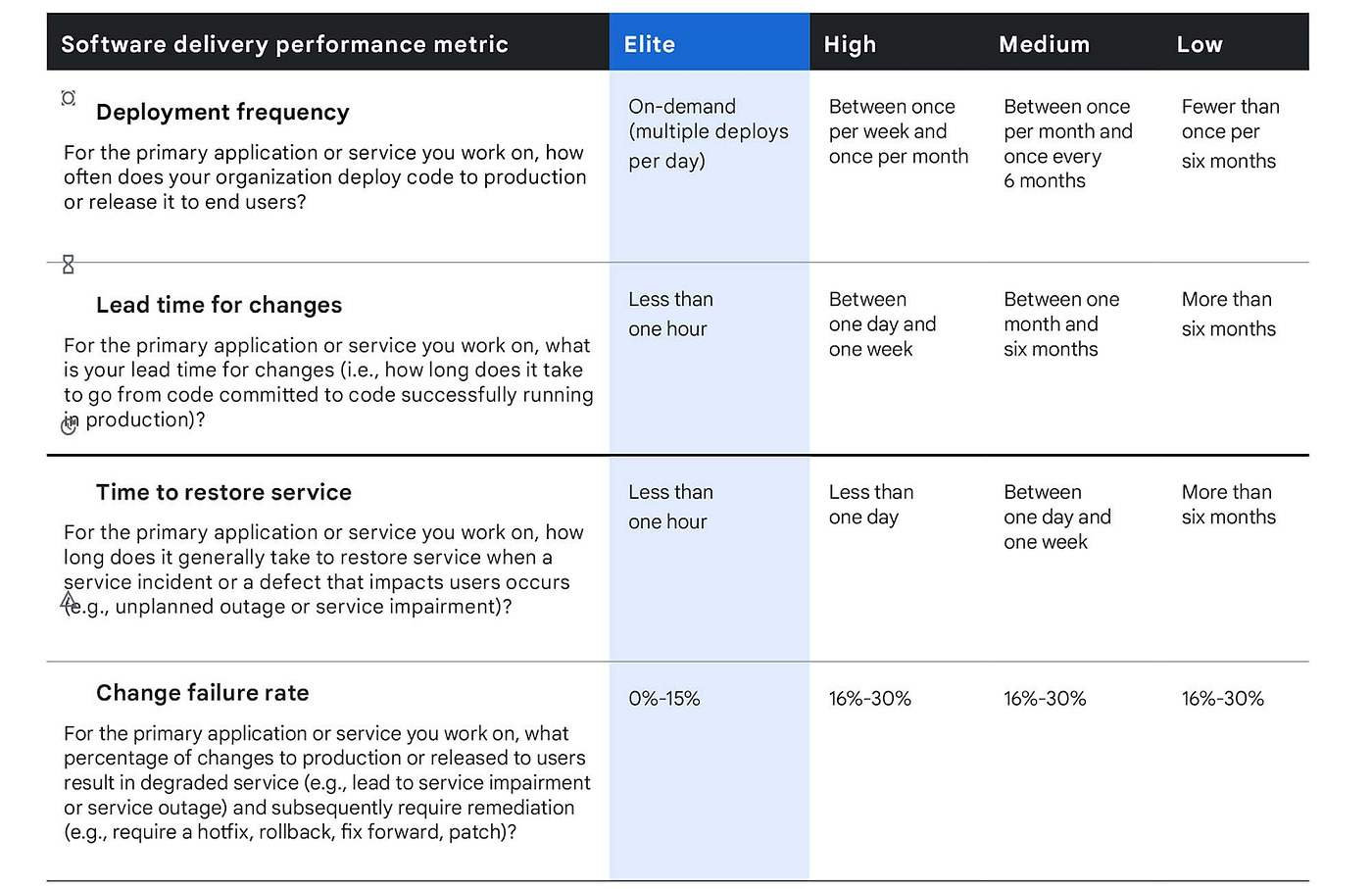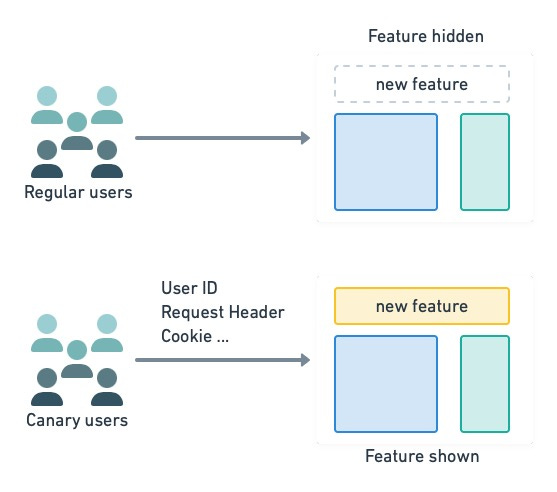Effective Release Management: An Ultimate Guide
Key strategies for pre-release preparation, coordination, post-release monitoring, and success metrics to ensure smooth, efficient software deployments
When I first started working in release management I was an engineer at a startup where everyone wears a lot of hats. At the start, the process seemed overwhelming. As a relatively new engineer, I remember the first major release I was part of. There were so many moving parts, and it felt like everything could go wrong at any moment. However, over time, I learned that managing releases isn’t the “throw and see what sticks” process it seemed to be.
In Big tech, release engineers are there to help, but this is not the case everywhere. In this guide, we’ll dive into every aspect of managing releases, from pre-release preparation to post-launch monitoring, all with a focus on making the process seamless and efficient regardless if you work with release engineers or not.
The Backbone of a Smooth Release Process
The importance of a structured release process is unmatched. A structured process minimizes risk, enhances collaboration across teams, and allows for quick recovery when things go wrong. It also can make or break the work-life balance of your team.
I’ve seen firsthand how a lack of preparation can lead to disastrous results. In one instance, we had a major release planned, but we overlooked a critical dependency between services. The operations team wasn’t informed about the need to update a shared configuration before deployment.The result? The primary service failed to start in production
Pre-Release: Laying the Foundation
Code Freeze and Final Testing
The pre-release phase is critical. This is when your code is finally ready for deployment, and it’s time to ensure everything works as intended. For me, the first step in this phase was always the “code freeze.” I learned that the real power of a code freeze is in reducing risk.
Code freeze does not mean engineers stop writing code, But it simply means that for the tag being released, there will be no additions, just fixes. By halting all new feature development and put a hard limit on the scope of release which allows focus on testing. This is how we could ensure stability.
Final testing happens during this phase, where final integration and user acceptance testing happens.
Cross-Team Coordination
Releases require alignment across multiple teams, including developers, QA, product managers, operations, and other cross-functional teams. Poor coordination can lead to misalignment, rushed processes, and frustration.
To ensure seamless cross-team coordination:
Establish a shared timeline: Create a clear release schedule that all teams agree on and understand.
Host regular syncs: Schedule check-ins to track progress, surface blockers, and ensure alignment. This can be a slack channel, or an email thread.
Document everything: Maintain shared documentation with roles, responsibilities, and key milestones for full transparency.
Assign points of contact: Designate a representative for each team to streamline communication and resolve issues quickly.
By prioritizing cross-team alignment, you reduce the risk of last-minute surprises and create a foundation for a smooth and successful release process.
User documentation
In B2B software, comprehensive documentation is critical for ensuring smooth releases and minimizing confusion. It’s easy to assume that everyone, from internal teams to clients, knows what to expect from a release, but gaps in understanding can lead to disruptions.
To ensure effective documentation:
Internal Documentation: Share release notes, deployment steps, and rollback strategies with all relevant teams to align everyone on the process.
Client-Facing Documentation: Provide detailed guides, FAQs, and implementation resources to help clients quickly adopt and integrate new features.
Client Education: In B2B, user education can play a significant role in reducing support tickets, increasing feature adoption, and ensuring clients are fully equipped to leverage new functionality.
By focusing on thorough internal and client-facing documentation, you build trust and ensure a smoother, more successful release in B2B environments.
Post-Release: Monitoring and Response
1. Monitoring the System After Deployment
Once your release is live, the real work begins. I learned this lesson the hard way during a release where everything seemed fine during testing, but performance metrics after launch were disastrous. The system started to lag, and we realized that we hadn’t anticipated the volume of traffic the new feature would attract. It was an intense learning moment. Ever since, I’ve been a strong advocate for post-release monitoring.
Tools like New Relic, Datadog, and Prometheus have become a critical part of my workflow. They allow me to track key performance indicators (KPIs) in real-time. By monitoring things like uptime, load times, and error rates immediately after a release, I can quickly spot and address potential issues. Early detection is key to maintaining a positive user experience and preventing long-term problems.
2. Stakeholder Communication
In the rush of deployment, it’s easy to forget to keep stakeholders informed. However, I’ve found that timely communication is vital. Forgetting to keep the stakeholders updated on the status will get them caught off guard when users report bugs, and it will delay their ability to address issues.
I always ensure that communication channels are open, and all relevant stakeholders receive timely updates. Whether it’s a quick email or a formal meeting, keeping everyone in the loop ensures transparency, trust, and the ability to react quickly if things go wrong.
3. Success Metrics for Releases
Measuring the success of a release goes beyond tracking uptime or bug reports. We should evaluate whether the release met its objectives and delivered value to users.
Clear success metrics before every release could include:
User Engagement: Metrics such as daily active users (DAU), feature usage rates, or time spent on key features.
Customer Satisfaction: Net Promoter Score (NPS), customer feedback surveys, or support ticket volume post-release.
Performance Metrics: Load times, error rates, or system performance improvements.
Business Outcomes: Conversion rates, customer retention rates, or even revenue growth linked to the release.
By tracking these success metrics, you ensure that we’re delivering real value and can make informed decisions about future releases. It will improve your knowledge of the business and help you contribute more value when discussing future work.
Elevating Your Release Process
1. Feature Toggles and A/B Testing
This approach allows you to push code live without exposing it to users immediately. it also enables you to toggle features on or off without redeploying code, providing flexibility and a solid backup plan.
When Facebook launched the News Feed redesign, they relied heavily on feature toggles to control access to the update. This allowed the engineering team to roll out the feature gradually, monitor performance, and gather user feedback.
Coupled with A/B testing, they compared user engagement metrics between the new and old designs, using the insights to iterate quickly. By refining the design based on real-world data, Facebook ensured the final release met user expectations while minimizing risk.
Feature toggles and A/B testing together empower teams to make safe, data-driven decisions, enabling gradual rollouts, rapid experimentation, and continuous improvement.
2. Continuous Delivery and Deployment
Continuous delivery (CD) and continuous deployment practices emphasize automating the build, testing, and deployment pipelines to ensure smooth and consistent delivery of updates.
Google’s engineering teams are well-known for their robust releasing system. For instance, Google Search’s continuous delivery pipeline processes thousands of daily code changes all done on a huge mono repo.
Engineers push updates to production multiple times a day, relying on automated testing to catch issues early. The process ensures that every code change is thoroughly vetted before deployment, maintaining the quality and reliability users expect. Google’s strategy also includes extensive monitoring and rollback mechanisms, allowing them to address any issues.
By adopting continuous delivery, we can deliver features and fixes faster while maintaining high quality. The key lies in rigorous testing, seamless automation, and proactive monitoring.
3. Managing Large-Scale Releases
As projects scale, managing releases becomes increasingly complex, involving coordination across multiple teams and systems. Large-scale releases require careful planning, communication, and risk mitigation strategies.
A classic case study is Google Chrome’s rollout strategy. Given Chrome’s massive user base, updates must be flawless. Google employs a staged rollout approach, initially releasing updates to a small percentage of users.
They monitor feedback and performance metrics closely, scaling up the release incrementally. This method helps identify and address issues early, ensuring the broader user base isn’t impacted. For complex updates, Google coordinates across engineering, product, and customer support teams to ensure alignment and preparedness.
Key strategies for large-scale releases include breaking down releases into manageable chunks, staged rollouts, and having a clear rollback plan. Effective communication and dependency management are also critical to minimizing risks.
The Continuous Journey of Release Management
Release management is a dynamic and ongoing learning process. Each release presents new challenges and lessons, helping refine the approach for future launches. With a solid process, effective communication across teams, and a focus on monitoring and measuring success, every release can bring value to users and the team.
As seen in the examples of Facebook and Google, mastering release management goes beyond technical skills. It requires understanding the broader impact of each release on the product, team, and end-users. Whether you’re starting out or leading releases at scale, remember that each release is an opportunity to improve, learn, and grow as an engineer.
Start small perhaps by formalizing your code freeze procedures, improving your monitoring tools, or conducting regular post-release retrospectives with your team, with time your process will mature to fit product needs.






